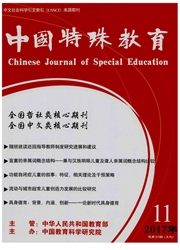

 中文摘要:
中文摘要:
本研究运用实验法和临床访谈法对某普通小学的43名二年级学生进行了一致/不一致应用题测验(任务一)和条件多余/条件不足应用题测验(任务二),以考察数学学优生和学困生在解决这些应用题时表征策略的差异。结果表明:(1)在任务一中,学优生在一致题目和不一致题目上的反应时差异显著,而学困生在这两类题上的反应时差异不显著;学优生和学困生在一致题目和不一致题目上的正确率差异显著;口头报告显示,学优生较多使用问题模型策略对问题进行表征,学困生较多使用直接转换策略对问题进行表征;(2)在任务二中,学优生的成绩要好于学困生,口头报告分析证明了前面的结果,即学优生较多使用问题模型策略,学困生较多使用直接转换策略;(3)由于表征策略的使用差异,学生在条件充要应用题上的正确率高于非常规应用题。
 英文摘要:
英文摘要:
A consistent/inconsistent word problem test (task Ⅰ) and a redundant/insufficient word problem test (task Ⅱ) are administered to 43 students in the second grade using experimental method and clinical interview method to explore the difference of representation strategy between superior students and inferior students when they solve the word problems. The results show that (1) In task I, the superior students' RT difference between consistent and inconsistent word problems is significant while it' s not significant for the inferior students ; the difference between accuracy of consistent problems and that of inconsistent ones is significant; most of superior students use problem - model strategy to represent word problems while most of inferior students use direct translation strategy to represent; (2) In task II, the performance of superior students are better than that of inferior students, and the self- report proves the previous results, i.e. most of superior students use problem - model strategy to represent word problems while most of inferior students use direct translation strategy to represent; (3) Because of application of different representation strategies, the accuracy of sufficient word problems is greater than that of irregular word problems.
 同期刊论文项目
同期刊论文项目
 同项目期刊论文
同项目期刊论文
 期刊信息
期刊信息
